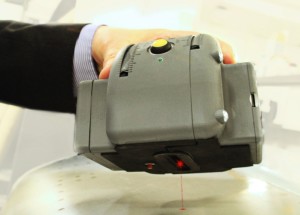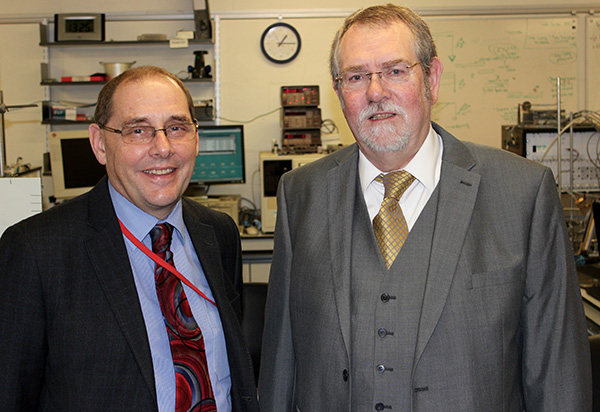Special scanner developed by Future Space customer Intercede Ventures can reduce airline fuel bills by 1%.
Getting dirty can be a real drag, especially if you are an aircraft wing. The is because as dirt accumulates on the outside of an aircraft the extra friction causes increased fuel consumption. Up until now it’s been hard to easily detect when this build-up of dirt has become a problem, so often planes are not at their most aerodynamically efficient between routine washes.
To solve this, a partnership between the University of the West of England and Bristol-based concept design firm Intercede Ventures has developed a sensor using lasers, light beams and mirrors that can detect how clean an aeroplane is and therefore help major airlines reduce their carbon footprints.
Graham Mimms, director of Intercede, said: “A clean aircraft is a more efficient aircraft but that’s not always been too easy to prove. We thought ‘If we can prove it, airlines would keep them clean and efficient’ and as a result more environmentally friendly.” And that proof is here: it is estimated that airlines using the instrument to direct cleaning crews to problem areas could cut their fuel bills by as much as 1%. This may not sound like much, but across a major fleet will be a considerable saving.
Graham adds: “Engineers will soon be able to walk around the aircraft with our patented and industry approved instrument to analyse which surface sections need cleaning to keep it in its most efficient state. If you clean it by applying an industry approved cleaning compound you will have an aircraft aerodynamically more efficient.”
“We detect when it becomes beneficial to re-clean specific areas of the aircraft as degradation (increased drag) is not even across the aircraft surface. By doing this, we can keep the aircraft within an efficiency envelope. By following our protocols, airlines will be able to maintain the surfaces in a more efficient state. An aircraft can look clean to the eye but not be aero-dynamically at its best – our instrument can detect this.”
The sensor (pictured right) will also help reduce the amount of water being used to clean the aircraft by targeting the areas that need it as opposed to an all over wash – which can use up more than 20,000 litres per wet wash. What’s more, the specific information on where the plane is dirty provided by the sensor allows for a more ecologically efficient dry-washing process. Graham explains: He said: “What we are recommending is more labour intensive but the resulting efficiency can be greater. If carbon emissions can be reduced by reduced drag efficiencies, airlines may also be able to benefit from reduced taxes.”

The development of the surface analyser, which included work from researchers at UWE’s Institute of Bio-Sensing Technology, has been supported with £100,000 in grants from UWE’s Business Technology Centre, iNets South West and Innovation 4 Growth. Investment firm Angels4Angels has also recently backed the venture with a six-figure sum. The sensors can also help in any other applications with aerodynamics play a factor e.g. the automotive, marine, rail and wind turbine industries.
Graham said Intercede decided to work with UWE because of its facilities, expertise and close ties with the aviation industry: “A big deciding factor was the fact UWE has considerable expertise in sensor technology development coupled with appropriate facilities, for example three wind tunnels. There is duel speed sub-sonic one and an ultra-sonic one. Using these was the basis of the initial research to prove that drag can be measured and could be related to the efficiency of the aeroplane.”
He adds: “We also looked at the history of the university and the way it is supported by the big names in the aviation industry including aircraft manufacturers and aero engine suppliers. For us it had the right credentials for the technological aspects of what we are doing.”

Since the development of the scanner, Intercede Ventures have recently successfully completed a year-long proof-of-concept trial on a number of Boeing commercial airliners. These were provided for the trials by Thomson Airways, a member of the TUI Group, the world’s largest tour operator.
